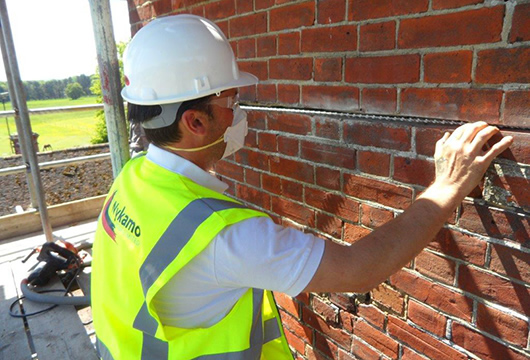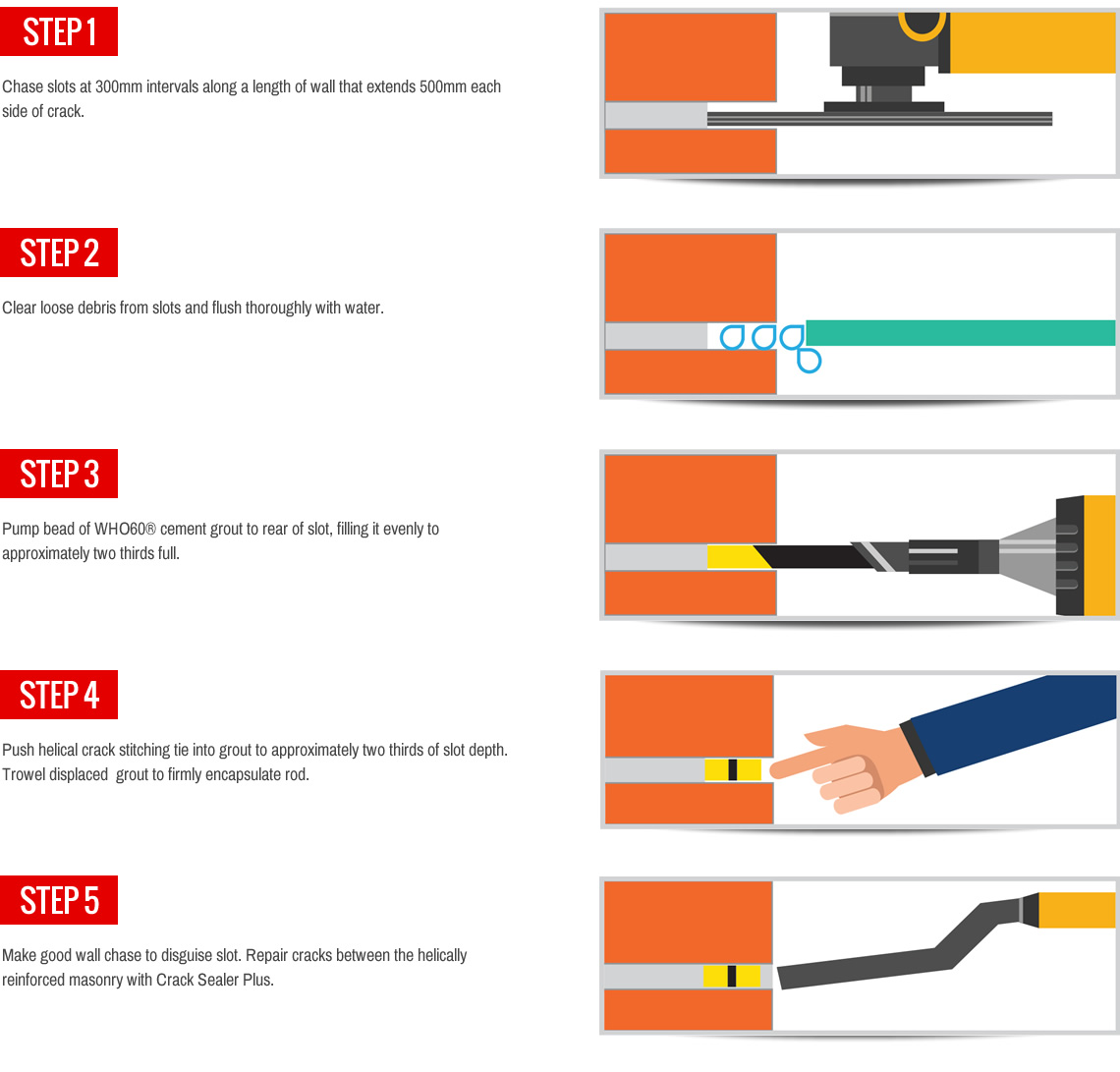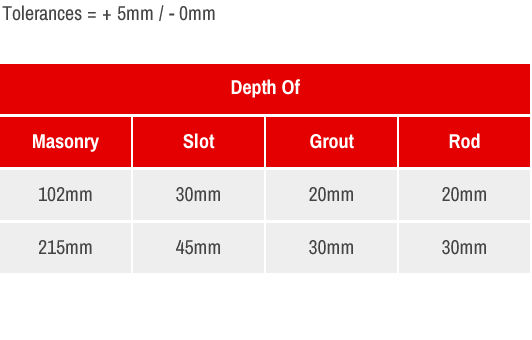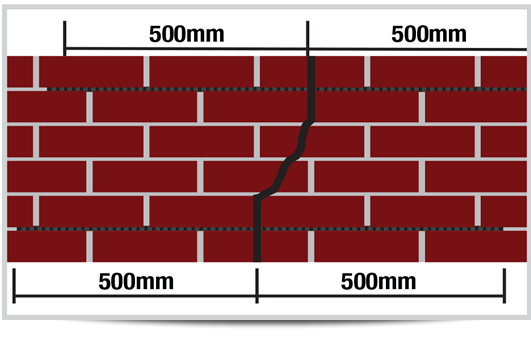


Wall cracks in masonry can be divided into three categories:
A crack which is increasing in width and/or length
A crack which is no longer increasing in width or length
A crack in a wall which opens and closes as the influence of the cause of the crack increases and decreases

Cracks in walls are the direct result of movement beyond that which can be accommodated by the construction materials. Typically wall crack where masonry is over-stressed and least restrained, such as at window and door openings or at corners. The movement that results in cracked walls is usually caused by variations in the moisture content of the masonry, or in the ground that supports it, temperature variations or by chemical reactions. Some movements are cyclic and reversible, many are permanent.

Bed joint reinforcement bars are bonded into mortar joints, at regular intervals, usually 300mm to 450mm apart, to tie the masonry on each side of the crack.
Mortar joints are simply raked out to form slots that extend minimum 500mm either side of the wall cracks. Each slot is thoroughly wetted prior to the application of the WHO60 grout. A crack repair bar is pushed into the grout such as to fully embed the rod and implement crack stitch repairs without costly rebuilding work and with minimum inconvenience to the occupants.
This effective system of masonry crack repairs fully restores the integrity of cracked walls to their pre-cracked state and allows the masonry to behave as a reinforced non-fractured unit.


